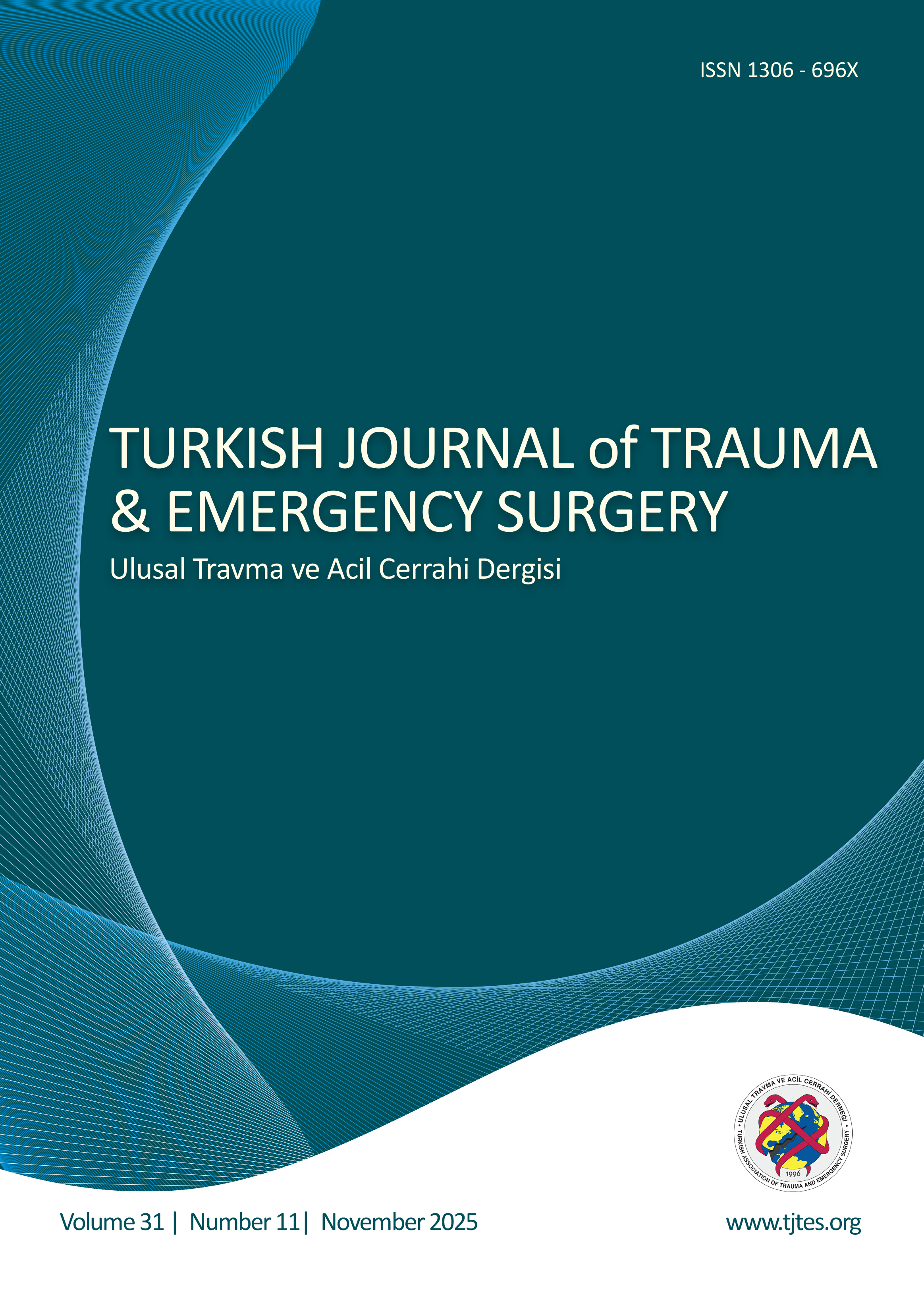Hızlı Arama
Sepsis tedavisinde N-asetilsisteinin serum glutatyon, TNF-α ve doku malondialdehid düzeylerine etkisi
Mehmet Gül1, Murat Ayan2, Abdüsselam Seydanoğlu2, Başar Cander1, Sadık Girişgin1, İbrahim Erayman3, Sami Erdem41Selçuk Üniversitesi Meram Tıp Fakültesi, Acil Tıp Ana Bilim Dalı, Konya2Gaziosmanpaşa Üniversitesi Tıp Fakültesi, Acil Tıp Ana Bilim Dalı, Tokat
3Selçuk Üniversitesi Meram Tıp Fakültesi, Enfeksiyon Hastalıkları Ana Bilim Dalı, Konya
4Selçuk Üniversitesi Meram Tıp Fakültesi, Biyokimya Ana Bilim Dalı, Konya
AMAÇ
Bu çalışmada, sepsis tedavisinde antioksidan bir ajan olan N-asetilsisteinin (NAC) serbest oksijen radikalleri düzeylerine olan etkileri araştırıldı.
GEREÇ VE YÖNTEM
Çalışmada ağırlıkları 180-200 gr arasında değişen 30 adet Sprague-Dawley cinsi dişi sıçan kullanıldı. Sıçanlar rastgele 10arlı 3 gruba (Grup I: Sham, Grup II: Sepsis ve Grup III: Sepsis + NAC) ayrıldı. Grup Ie yalnızca laparotomi yapıldı. Grup II ve Grup IIIde çekal ligasyon perforasyon (ÇLP) yöntemiyle sepsis modeli oluşturuldu. Grup IIIe oral yoldan 0., 8. ve 16. saatte 20 mg/kg/gün NAC verildi. 24. saatte eritrosit glutatyon (GSH), serum TNF-α değerlerinin tayini için kan örnekleri ile histopatolojik inceleme ve doku malondialdehid (MDA) tayini için akciğer, karaciğer ve böbrek doku örnekleri alındı.
BULGULAR
Grup IIIde TNF-α, eritrosit GSH ve böbrek doku MDA değerleri diğer gruplarla karşılaştırıldığında istatistiksel açıdan farklılık saptandı (p<0,05). Karaciğer doku MDA değerleri ve akciğer, karaciğer ve böbrek dokularının histopatolojik inceleme sonuçları açısından ise gruplar arasında farklılık bulunmadı (p>0,05).
SONUÇ
Sepsis oluşturulan sıçanlara verilen NAC tedavisinin eritrosit GSH, serum TNF-α düzeylerine, akciğer fonksiyonlarına, böbrek doku MDA seviyelerine olumlu etkileri saptandı. Buna karşılık bu olumlu etkinin histopatolojik düzelmeye yansımadığı görüldü. NACnin sepsis tedavisinde olası yararlı etkilerini ortaya koymak için yeni çalışmalara ihtiyaç vardır.
Anahtar Kelimeler: Glutatyon, N-asetilsistein; sepsis; tümör nekroz faktör-α; malondialdehid.
The effect of N-acetyl cysteine on serum glutathione, TNF-α and tissue malondialdehyde levels in the treatment of sepsis
Mehmet Gül1, Murat Ayan2, Abdüsselam Seydanoğlu2, Başar Cander1, Sadık Girişgin1, İbrahim Erayman3, Sami Erdem41Departments Of Emergency Medicine, Selcuk University, Meram Faculty Of Medicine, Konya, Turkey2Departments Of Emergency Medicine, Gaziosmanpaşa University, Faculty Of Medicine, Tokat, Turkey
3Departments Of Infection Diseases, Selcuk University, Meram Faculty Of Medicine, Konya, Turkey
4Departments Of Biochemistry, Selcuk University, Meram Faculty Of Medicine, Konya, Turkey
BACKGROUND
The aim of this study was to investigate the effects of N-acetyl cysteine (NAC) on the levels of reactive oxygen species in sepsis.
METHODS
In this study, 30 Sprague-Dawley female rats weighing 180-200 g were used. Rats were randomized into three groups, each containing 10 rats, as follows: Group I: Sham, Group II: Sepsis and Group III: Sepsis+NAC. Group I underwent only laparotomy. In Groups II and III, sepsis was induced by cecal ligation and perforation (CLP) technique. NAC (20 mg/kg/day) was administered orally to Group III at 0, 8 and 16 hours. At the 24th hour, tissue and blood samples were taken for erythrocyte glutathione (GSH) and serum tumor necrosis factor (TNF)-α levels, histopathological determination, and lung, liver and kidney tissue malondialdehyde (MDA) analyses.
RESULTS
Group III was significantly different from the other groups with respect to erythrocyte glutathione, serum TNF-α and kidney MDA levels (p<0.05). There was no significant difference between the groups regarding liver MDA levels and histopathological parameters for lung, liver and kidney (p>0.05).
CONCLUSION
NAC treatment had beneficial effects on erythrocyte GSH, serum TNF-α, lung function, and kidney MDA levels in sepsis-induced rats. However, this beneficial effect was not confirmed as histopathological improvement. Further research is needed to prove the effect of NAC in sepsis treatment.
Keywords: Glutathione, N-acetyl cysteine; sepsis; tumor necrosis factor-α; malondialdehyde.
Makale Dili: İngilizce





